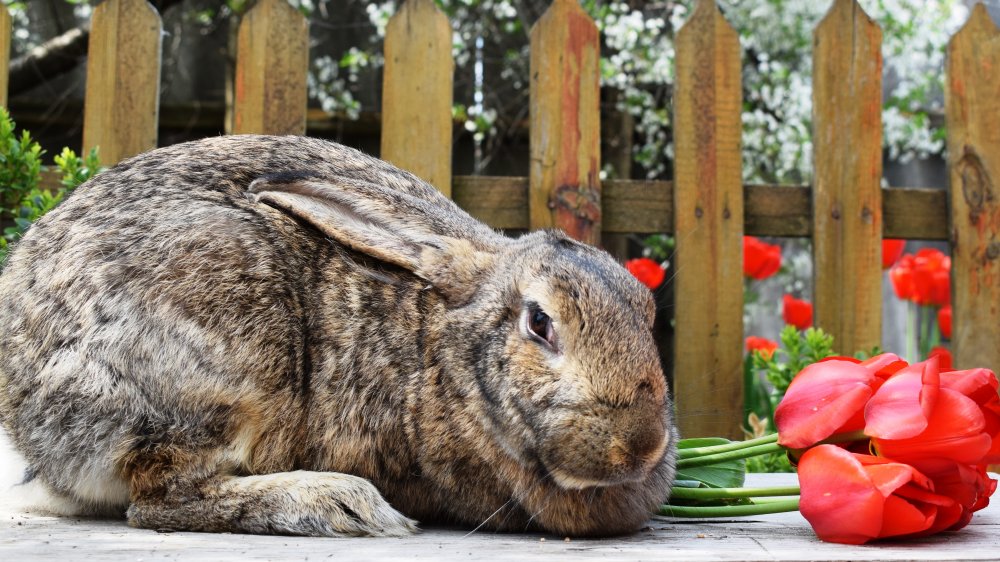The Largest Rabbit Breed In The World
For the better part of its history, mankind has not been defined by our ability to say "that's enough." We eat until we weigh 800 pounds. We build until our towers scrape the underbellies of the gods. And when we domesticate an animal, we don't just bend its mind to suit our needs, we make use of science and selective breeding to ensure that they become the biggest, or smallest, or dumbest looking versions of themselves possible.
Enter the humble rabbit. What many would look upon and say "you know what? Good enough," our ancestors took a gander at and, like so many car-struck antagonists from a Stephen King story, whispered "thicker." How much thicker? Read on.
The world's biggest rabbit breed: hubris in motion
Look upon man's work, ye mighty, and despair: the Flemish Giant. That's the name of the breed of rabbit generally considered to be the most hulking, by rabbit standards. Originating in Belgium around the 19th century, the Flemish Giant lives up to its name: while your standard American brush rabbit might weigh in at about a pound or two, the Flemish Giant tips the scales at between 14 and 22 pounds.
Not big enough for you? Depending on who you ask, there's another contender: the Continental Giant. Recognized as a breed all its own by some rabbit enthusiasts but not by others, it's nevertheless the category into which Darius, the world record holding biggest bunny ever, is placed. 4 feet 4 inches long at weigh in, he was, technically, the same height as Tyrion Lannister. Continental Giants are considered offshoots of the Flemish Giant breed, in case you were concerned that there might be dozens more varieties of bunnies capable of physically overpowering you.
What do they eat? People. No, we're kidding. According to Darius' owner, he was pretty much down with the normal rabbit mealtime fare: apples, carrots, and kibble. But lots of it. Between him and his slightly smaller son, she said she ran through £5,000 per year just keeping them fed. To be honest, humans might be a more cost effective meal option.

